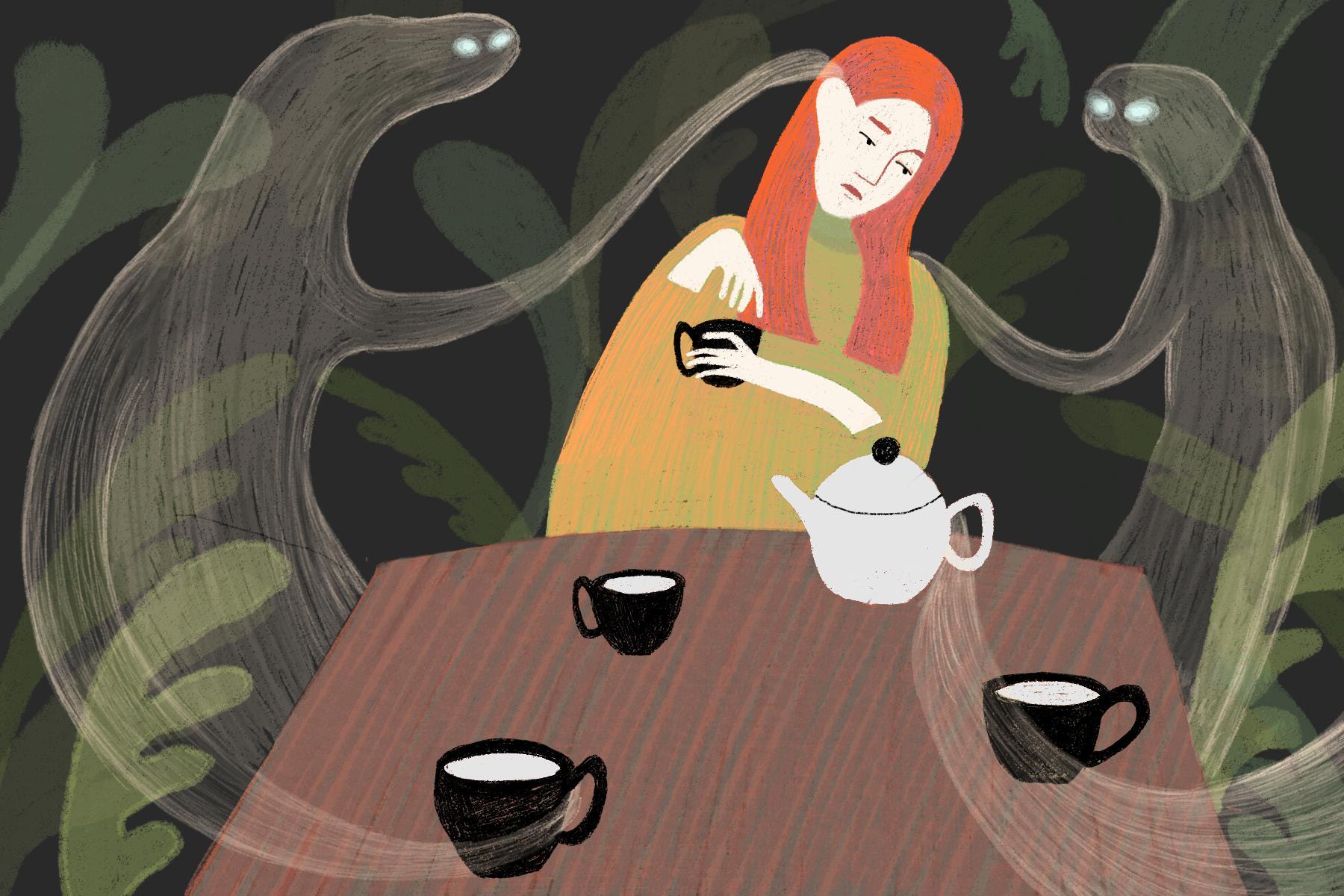There is another epidemic in the world, and it is not the opioid epidemic, or heart disease, or depression or anxiety. It’s a silent, undercover contributor to all of these problems and more — loneliness. The pervasive issue of loneliness is something that Dr. Vivek Murthy, the U.S. surgeon general from 2014 to 2017, started to observe in his patients. He felt helpless because this was a recurring problem that he felt utterly ill-equipped to address.
Even after his time as surgeon general, Murthy continued to research the “loneliness epidemic,” and recently released his new book, “Together: The Healing Power of Human Connection in a Sometimes Lonely World.” Through his book and a recent NPR podcast, Murthy eloquently details why loneliness has real health implications, why it is so difficult to overcome and what practical solutions can be put in place.
Through research, Murthy found that what he observed in practice was reflected in numbers. According to a 2019 study by the Kaiser Family Foundation Survey, 22% of Americans struggle with chronic loneliness. This puts them at a greater risk of cardiovascular disease, fragmented sleep, dementia and a host of other afflictions. To make matters worse, loneliness may even have an impact on lifespan.
Studies done by Julianne Holt-Lunstad from Brigham Young University have shown there is a correlation between loneliness and the shortening of lifespan. The impact on mortality has been shown to be similar to that of smoking 15 cigarettes a day.
To understand why loneliness has direct health implications, it is helpful to understand human biology and psychological reactivity in terms of hunter-gatherer survival. Although the vast majority of Americans have long since abandoned the hunter-gatherer lifestyle, the hunter-gatherer brain still remains very much intact. Evolutionary theory surrounding loneliness indicates that humans were designed to be social creatures who depend on each other for survival — existing in groups made it easier to pool food, defend against predators and care for children.
Aloneness in ancient times was a distinct disadvantage when it came to survival, which explains why humans still experience an outflow of stress hormones when confronted with loneliness. This stressful state increased alertness and reactivity, but over a long-term period, an elevated stress state can be the source of inflammation. Inflammation throws the body off balance and makes it prone to other illnesses. The elevated stress state that comes along with loneliness can also manifest in the form of anger, irritability, anxiety and depression, which could lead to rises in addiction and violence.
But why is loneliness so difficult to overcome? Isn’t the end to loneliness as simple as a DM to an old friend? The solution may be simple, but not as easy as logging in to social media. There are actually some psychological barriers that obscure the real solutions and make them feel unreachable.
First, there is a profound sense of shame. The shame that comes with loneliness writes a story in our minds: “My aloneness is proof that I am so socially deficient, so unlovable, too different.” These beliefs create a reality that feels unshakeable, and the loneliness deepens. And of course, none of this is true — just because co-workers, peers or friends from the past don’t reach out does not mean that there is something fundamentally wrong with us.
It may, in reality, be that everyone else is too busy thinking about the fact that there must be something wrong with them. But this seemingly real confirmation of our own social ineptitude makes us want to run further from situations that may confirm this belief again, thus unconsciously serving to deepen our own aloneness. Asking for help seems out of the question when the act of admitting to loneliness is like an admission of deeply ingrained character flaws.
There is also a force that works against the lonely person at a biological level: Loneliness is a state in which the body’s threat mode is heightened, and others are regarded with more wariness and suspicion than usual. In this state, attention is funneled far more heavily toward the self. This makes sense in hunter-gatherer societies, in which surviving without the company of others often required a state of heightened awareness. However, in the modern world, this turn toward oneself serves less as a means of survival and more as a barrier to escaping isolation.
Murthy does not deliver this grave news without offering some solutions. In order to address shame, Murthy suggests establishing a connection to self through a brief embrace of solitude. He notes that there are two components to connection with self: self-knowledge and self-acceptance. Murthy believes that connection to self is the foundation that is needed to connect with other people.
“When we’re connected to ourselves,” he notes in an NPR interview, “we understand that we have self-worth, [and] we understand that we have value to bring to the world. And the truth is that many of us walk around not necessarily believing that.” When it comes to inner imbalance, or inner unrest, the first step of the solution must always be at the level of the individual.
And so perhaps paradoxically, healing loneliness requires time alone: time to reflect, time to live in the present moment, time to let go of the false, harmful stories about who we are that erode both our connection to self and our ability to connect with others.
In addition to inner healing, Murthy prescribes another mindset shift: a shift toward service to others. A “service mindset” acts as an antidote for two reasons: it is a means of finding purpose and self-actualization, and a way to combat the shame and sense of worthlessness that pushes lonely people away from others. It also combats the instinctual turn inward by explicitly placing the focus on something outside of the mind.
He clarifies that what he means by “service” does not have to be a grand volunteer plan to solve world hunger. It could be as simple as calling a struggling friend to offer support, making cookies or banana bread for an elderly neighbor or checking in with co-workers on how they’re feeling.
Murthy notes that through this method, the many opportunities that exist to connect become clearer, and the only things that service opportunities require are “an open mind, a full heart, and a desire to honestly, truly, and openly connect with another human being.”
This advice could not come at a more opportune time in world history. When asked about the possible impact of the COVID-19 pandemic on social well-being, Murthy was optimistic, and noted that although the pandemic necessitated physical distancing, it could also be an opportunity to prioritize relationships and rethink their role in our lives. “I think there’s a real possibility that the physical distancing we’re being asked to observe … could very well contribute to more loneliness … but I don’t think it has to be that way. In fact – I think that this is potentially an opportunity for us to re-think and re-center our lives around relationships.”
And Murthy may be right. For many, the pandemic could expose an area in all of our lives that deserves utmost care and attention. This area is what Murphy calls, “the vehicle through which love is delivered”: relationships.

















